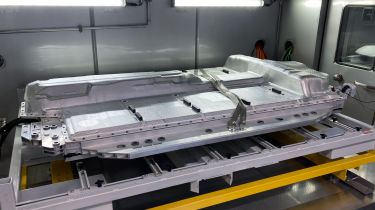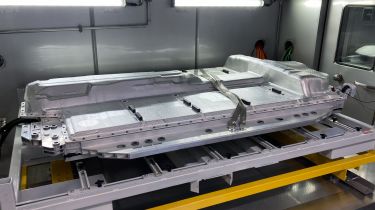Understanding Electric Car Batteries
Electric vehicles (EVs) have become increasingly popular, but the technology behind their batteries remains somewhat mysterious. Most EV batteries are lithium-ion based, similar to those found in smartphones but on a much larger scale. A battery pack consists of multiple modules containing various cells; for instance, the Porsche Taycan’s 93kWh Performance Battery Plus has 33 modules with 12 cells each.

Each cell contains a positive cathode and a negative anode, separated by a non-conductive separator and surrounded by an electrolyte solution. When charging, lithium ions flow through cabling into the anode, then through the separator to the cathode, where they are stored. During discharge, the process reverses, with ions traveling from the cathode to the anode and then to the electric motor.
Types of Lithium-Ion Batteries
There are two primary types of lithium-ion batteries: NMC (Lithium Nickel Manganese Cobalt Oxide) and LFP (Lithium Iron Phosphate). NMC batteries offer superior energy density, making them ideal for sports cars like the Porsche Taycan. However, they have raised concerns due to the unsustainable mining of precious metals like cobalt and typically have a shorter lifespan than LFP batteries.
LFP batteries, while having lower energy density, are more environmentally friendly, cheaper to produce, and suitable for budget EVs. The choice between NMC and LFP depends on the specific requirements of the vehicle.
Lifespan and Safety of EV Batteries
The lifespan of an EV battery depends on usage patterns. Factors such as high temperatures, frequent full charging, and long driving periods can reduce a battery’s capacity over time. Porsche offers an eight-year, 100,000-mile battery warranty, but batteries are expected to last longer, potentially up to 15 years and over 180,000 miles before dropping below 70% capacity.
Safety is another concern, with thermal runaway potentially leading to difficult-to-control fires. However, manufacturers like Porsche incorporate safety measures, including accelerometers and sensors to discharge high-voltage components upon impact. The positioning of HV parts away from impact areas and body design to minimize stress on the battery pack also enhance safety.
Environmental Impact and Recycling
While building EV batteries emits more CO2 than producing ICE cars, studies show that EVs break even in terms of CO2 emissions after about two years or 19,500 miles. The use of green energy in factories and recycling of materials will further reduce the environmental impact. EU regulations require manufacturers to incorporate recycled content in EV batteries, starting from 2026.
Porsche is working on a pilot scheme to recycle EV batteries, refining materials from used cells for reuse. This approach could significantly reduce the need for primary mining and support a circular economy for EVs.
Future Developments in EV Batteries
EV battery technology has evolved significantly, with ongoing improvements in reliability and range. Experts predict that battery sizes and ranges will continue to evolve, with a potential plateau at around 500 miles by 2030. Solid-state battery technology, being developed by companies like BMW and Toyota, promises greater energy density, less degradation, and lower fire risk, although it is still in development.
As the EV market continues to grow, advancements in battery technology will be crucial for sustainability and performance. The industry is moving towards more environmentally friendly practices, including recycling and the use of recycled materials in battery production.



